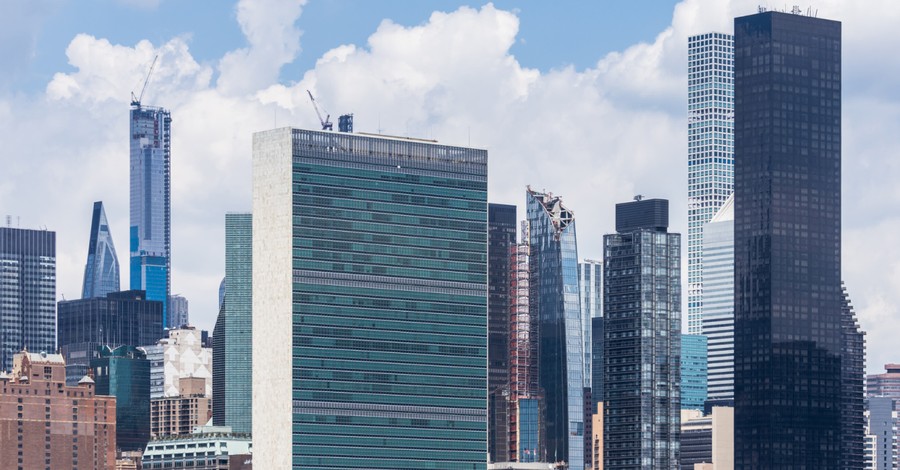
A sculpture recently on display at New York City’s United Nations Plaza, likened by many Christians to a biblical “end times” beast, has been removed.
As Christian Headlines previously reported, a vibrantly colored winged-feline sculpture known as the Guardian for International Peace and Security was placed outside the plaza on November 9 on behalf of the government of Oaxaca, Mexico, to express the power of Mexican culture.
It immediately sparked controversy on social media for its resemblance to the “end times beast” described in the books of Daniel and Revelation.
Stéphane Dujarric, a spokesman for U.N. Secretary-General António Guterres, asserted that the display was only temporary and was removed according to schedule.
“The statue you refer to was a temporary exhibit organized by the Permanent Mission of Mexico to the United Nations. It was taken down, as scheduled and anticipated, on December 20,” Dujarric told The Christian Post in a statement on Monday.
Before its placement at the U.N. Plaza, the Guardian for International Peace and Security was on display at Rockefeller Center as part of the annual celebration of Día de Los Muertos, or Day of the Dead. The statue was in Rockefeller Center from October 22 to November 2.
As reported by Hyperallergic, the winged beast was placed alongside an 11-foot dragon sculpture. Both are considered spiritual guides, also known as Alebrijes, in Mexico. The works were created by Atelier Jacobo and María Angeles, the founders of Angeles Atelier.
Ricardo Angeles, the Angeles’ son and principal designer of the Alebrijes, further explained the significance of both mythical creatures to Hyperallergic.
“I love New York and its architecture, especially the Art Nouveau styles and the gargoyles of some buildings,” he said. “I decided to create fantastical beings that also symbolized empathy and solidarity from us, the artisans who didn’t immigrate, toward our family members who are here in the United States.”
“We wanted to give them these guides to look over them, to let them know they are not alone. That’s why we included designs related to netting or frontiers, to reference the [U.S.-Mexico] border,” he continued. “It’s very much a symbol of the present, mixed with my family’s very traditional symbolism.”
According to Oaxaca state’s Governor Alejandro Murat Hinojosa, the alebrijes represent Zapotec culture.
“When you think of the alebrijes, you think of the Zapotec cultures, which said before they existed in their physical form, they represented the nagual, the spirit inside of us, the purpose of life,” he said. “By being here today with the alebrijes, we confirm our purpose.”
In the early 1930s, the first alebrijes were created by Pedro Linares, an Indigenous Mexican artist, in Oaxaca. While the original displays were made with paper mâché, artists used carved and painted wood for later works.
Related:
Photo courtesy: ©Getty Images/Michael Lee
Milton Quintanilla is a freelance writer and content creator. He is a contributing writer for CrosswalkHeadlines and the host of the For Your Soul Podcast, a podcast devoted to sound doctrine and biblical truth. He holds a Masters of Divinity from Alliance Theological Seminary.










